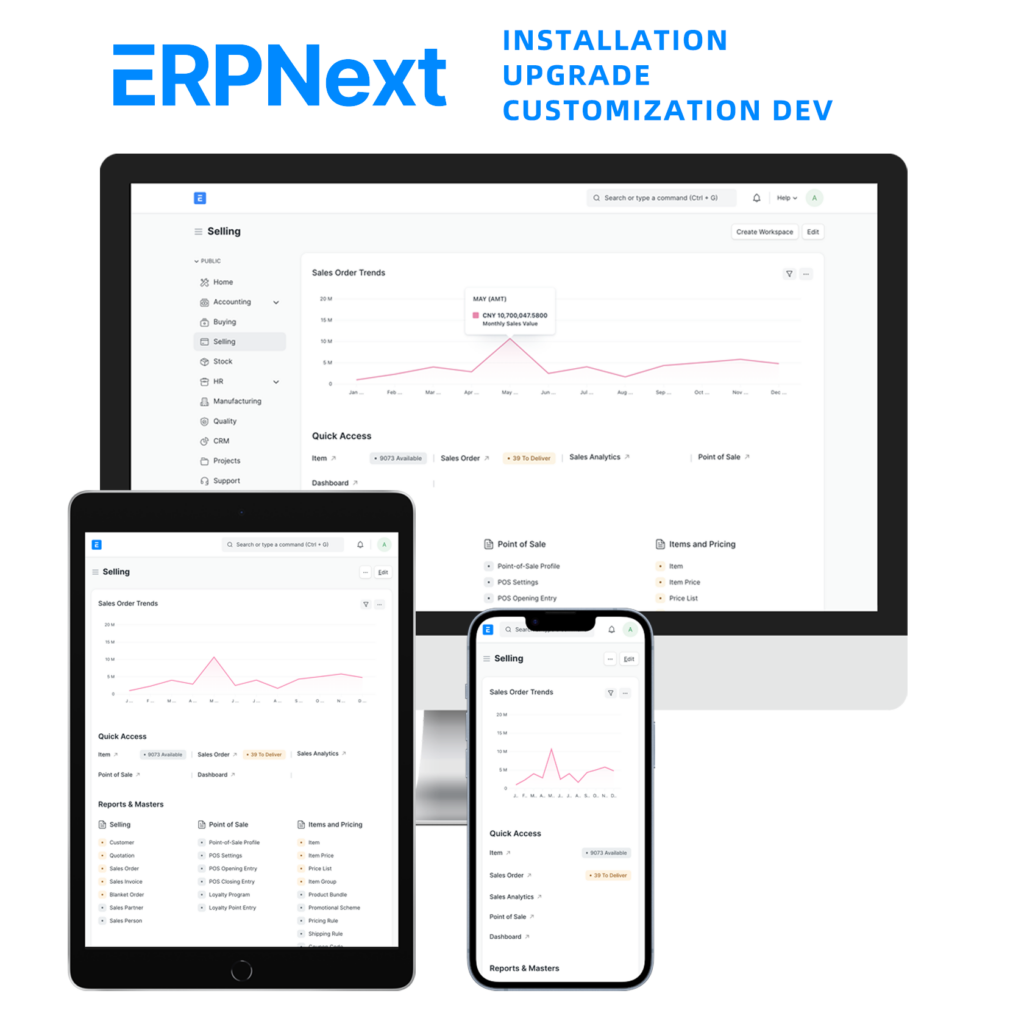When choosing an ERP system, companies often struggle between three deployment options: SaaS, private deployment, or traditional on-premise. Each option comes with different investment costs, levels of data control, security implications, and future scalability.

This article breaks down five key factors to help you make sense of these choices, with real-world cases to guide you toward the most suitable path.
1. Data Sovereignty and Security Control — Who Really Owns Your Data?
- SaaS: Your data is hosted by the cloud vendor. No need to worry about hardware maintenance, but in industries with strict data privacy and compliance rules (e.g., healthcare, finance), it may fall into a “privacy gray zone.”
- Private / On-Premise: Your company fully controls the data, making compliance audits easier and better aligned with complex legal requirements.
Case: A retail company chose private deployment and, during an audit, was able to provide cabinet photos and hard drive serial numbers. The auditors were impressed — something you could hardly do with a SaaS service.
2. Deployment Costs and Maintenance Burden — Who Will Shoulder the Work?
- SaaS: No hardware costs, subscription-based billing. But subscription fees accumulate year after year.
- Private / On-Premise: High initial investment in servers and an IT team, but long-term cash flow pressure is more manageable.
Case: A 40-user SaaS setup costs ¥60,000 per year — that’s ¥300,000 over five years. Private deployment required a one-time ¥180,000 investment plus smaller ongoing maintenance costs, making it more cost-efficient in the long run.
3. Flexibility in Customization and Business Fit — Can Your Processes Be Changed at Will?
- SaaS: Usually multi-tenant with standardized features, offering limited customization.
- Private / On-Premise: Supports deep customization, such as seamless integration with existing LIMS systems, avoiding repetitive Excel exports.
Case: After private deployment, one company integrated ERP with its clinical trial follow-up module, eliminating the need for repetitive exports and greatly improving efficiency and user experience.
4. Upgrades and Migration Flexibility — What If You Change Your Mind?
- SaaS: Vendor handles regular upgrades, features are continuously updated — but pricing and version access may also increase.
- Private / On-Premise: You control upgrades, but they require budget; migrating data is more complex. Before deployment, ensure that data export mechanisms are smooth.
Case: Many companies ask during evaluation: “What’s the server requirement? Will future upgrades cost extra? How exactly can we export our data?” These operational details are must-clarify items before making a choice.
5. Business Growth and Scalability — Can the System Grow With You?
- SaaS: Quick to launch, good for trial phases. But as the business grows, you may face traffic limits, price hikes, and customization barriers.
- Private / On-Premise: Demands more IT resources, but during peak seasons, you can scale up resources yourself.
Case: A company with over 200 retail stores deployed POS, membership, and inventory systems on a private cloud. During the Chinese New Year rush, they expanded virtual machines themselves to handle the load. With SaaS, they might have faced throttling or price surges.
Quick Comparison Table
| Factor | SaaS | Private / On-Premise |
| Data Control | Relies on cloud vendor, limited flexibility | Full control, higher security and compliance |
| Cost Structure | Subscription-based, low upfront; long-term cost unclear | High upfront cost, lower long-term expense control |
| Customization | Standardized, limited customization | Deep customization, system integration ready |
| Upgrades & Migration | Vendor auto-upgrades, unknown cost changes; data migration tricky | Paid upgrades, migration must be planned |
| Scalability | Fast to launch, but may hit limits and price hikes | Self-scaling possible, requires IT resources |
Conclusion
Choosing an ERP system is not a one-size-fits-all decision. You must decide whether your priority is saving time and money with quick deployment, full control over data and deep customization, or lower total cost with stronger scalability in the long term.
Once your needs are clear, you can match them with the right deployment model, learn from real cases, and make a practical, low-risk choice.